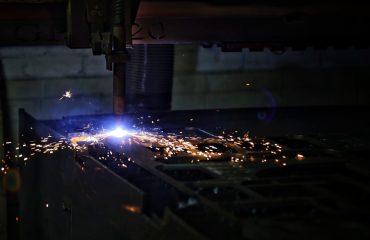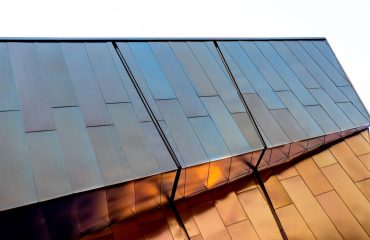Understanding Equal Angle Bars: Definition and Properties
Equal angle bars, often simply called “angles,” are L-shaped structural components with two legs of equal length. These legs are typically joined at a 90-degree angle, although other angles are possible, but less common in standard applications. Made from various materials, most commonly mild steel, they are known for their strength-to-weight ratio and versatility. Their properties depend heavily on the material used and their dimensions. Key properties include:
- Tensile Strength: The ability to resist pulling forces.
- Yield Strength: The stress at which the material begins to deform permanently.
- Compressive Strength: The ability to resist crushing forces.
- Shear Strength: The ability to resist forces that cause slippage along parallel planes.
- Ductility: The ability to deform plastically before fracturing.
- Hardness: Resistance to indentation or scratching.
Understanding these properties is crucial when selecting the appropriate angle bar for a specific application.
Diverse Applications of Equal Angle Bars in Construction
Equal angle bars find widespread use in various construction projects, both large and small. Their strength and versatility make them ideal for a multitude of applications:
- Structural Support: Used as bracing elements in buildings, bridges, and other structures. They provide lateral support to beams, columns, and walls, enhancing stability and preventing collapse.
- Framing: Used in the construction of frameworks for buildings, sheds, and other structures. They can be welded or bolted together to create strong and rigid frames.
- Reinforcement: Used to reinforce existing structures or to strengthen weak points. They can be welded or bolted to existing members to increase their load-bearing capacity.
- Guardrails and Fencing: Used in the construction of guardrails, fences, and other barriers. Their strength and durability make them suitable for applications where safety is paramount.
- Machinery and Equipment: Used in the construction of machinery and equipment, providing support and structural integrity to various components.
The specific size and material of the angle bar will depend on the application and the load it needs to support.
Manufacturing Processes and Material Selection
Equal angle bars are typically manufactured through hot rolling or cold rolling processes. Hot rolling involves passing heated steel through a series of rollers to shape it, resulting in a stronger, but less accurate, product. Cold rolling produces more precise dimensions and better surface finish but with slightly reduced strength. The choice of manufacturing process depends on the desired properties and tolerances.
Material selection is crucial. While mild steel is the most common material, other options exist, each with its own advantages and disadvantages:
- Mild Steel: Cost-effective, readily available, and offers a good balance of strength and ductility.
- Stainless Steel: Offers superior corrosion resistance, making it ideal for outdoor or harsh environments. However, it is more expensive than mild steel.
- Aluminum: Lighter than steel, offering good corrosion resistance and high strength-to-weight ratio, but less strong than steel.
The selection of the material depends on the specific application requirements, budget, and environmental conditions.
Advantages and Disadvantages of Using Equal Angle Bars
Equal angle bars offer several advantages, contributing to their widespread use:
- High Strength-to-Weight Ratio: They are relatively strong for their weight, making them efficient for structural applications.
- Versatility: They can be used in a wide range of applications and can be easily welded, bolted, or riveted.
- Cost-Effectiveness: Generally less expensive than other structural shapes like I-beams or channels, especially mild steel angles.
- Easy Fabrication: They are relatively easy to cut, drill, and weld, making them suitable for both large-scale and small-scale projects.
However, some disadvantages should also be considered:
- Potential for Bending: They can be susceptible to bending under heavy loads, especially if not properly supported.
- Limited Load-Bearing Capacity Compared to Other Sections: While strong, they might not be suitable for extremely heavy loads in comparison to I-beams or H-sections.
- Corrosion Susceptibility (Mild Steel): Mild steel angles are prone to rust and corrosion, requiring protective coatings in certain environments.
Careful consideration of these factors is essential for successful project implementation.
Selecting the Right Equal Angle Bar for Your Project
Choosing the correct equal angle bar requires careful consideration of several factors:
- Size and Dimensions: The dimensions of the angle bar should be chosen based on the load it needs to support and the application requirements. Larger angles provide greater strength and stiffness.
- Material: The material should be selected based on the application’s environmental conditions and required properties (strength, corrosion resistance, etc.).
- Surface Finish: The surface finish can affect the appearance and the ease of welding or painting. Hot-rolled angles have a rougher finish, while cold-rolled angles have a smoother finish.
- Load Calculations: Accurate load calculations are crucial to ensure that the selected angle bar can safely support the intended load. This often requires engineering expertise.
- Budget Constraints: Cost is a significant factor, particularly for large projects. Balancing cost with performance requirements is essential.
Consulting with a structural engineer is highly recommended for critical applications to ensure the appropriate selection and safe implementation of equal angle bars.
Disclaimer: This information is for general guidance only. Always consult with a qualified professional for specific engineering advice and load calculations.
Tags: equal angle bars, angle iron, steel angles, structural steel, construction materials




